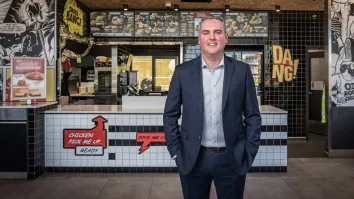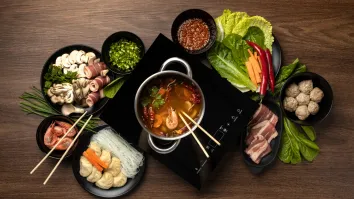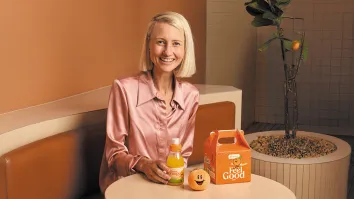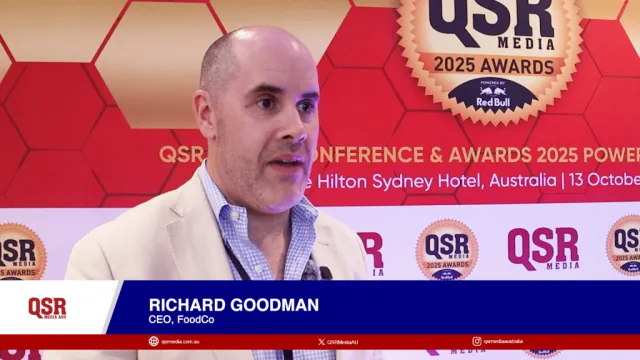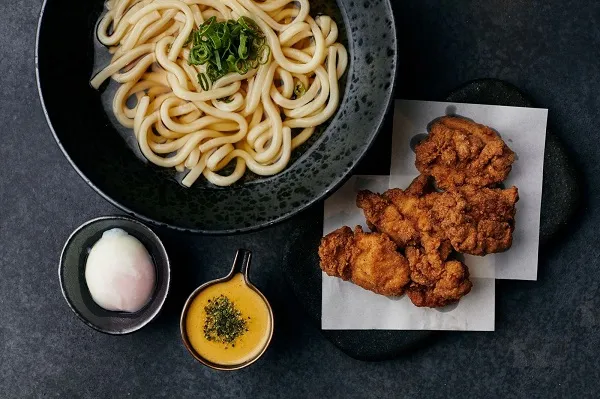
Can fast food heavyweights withstand the premiumisation wave?
Operators embracing premium meals are projected to take more market share in the next five years.
In a sea of brands situated in Chadstone’s dining precinct, a Japanese fast casual chain known for their premium food offerings is looking to bring their ‘A-game’ along with a ‘A-star’ chef.
Japanese wagyu-don eatery OMI recently partnered with Japanese Iron Chef Ikuei Arakane, who will serve as their Executive Consultant Chef to create a new udon range.
OMI says the fit-out, which can accommodate seventy diners, will still pay homage to their original concept. From premium-marbled beef sourced from award-winning local suppliers to deluxe Japanese sauces, the chain aims to combine the much-loved rice bowl with the quality of Asian flavours.
“Finding quality yet affordable food at any food court in Melbourne is sometimes difficult, but we created OMI to fill this void,” Ven Chin, founder of OMI, said. “OMI has proven to be a successful model, with interest from potential franchisees and potential joint venture partners to expand OMI to other countries.”
OMI is one of many smaller operators in the country making its presence felt with their premium offerings. Traditional and more established chains, whether big or small, have also recognised the benefits of riding the premiumisation wave.

Gelatissimo's chef-powered Deluxe Range. Photo: Supplied
Three months ago, Gelatissimo created their Deluxe Range of ice cream flavours, which include the Golden Macadamia Blondie, Luxe Lime and Coconut and Decadent Cookie Dough. The premium range was done in collaboration with brand ambassador Reece Hignell, who was a contestant in this year’s Masterchef Australia.
“Working with a talented chef like him not only brought fresh inspiration, but allowed us to create a range of flavours that appealed to all Australians and especially to those who desire a more deluxe and indulgent treat,” Gelatissimo’s CEO Filipe Barbosa said.

McDonald's Classic Angus, a staple in their Gourmet Creations range. Photo credit: McDonald's Australia website
Fast food giant McDonald’s also released their Gourmet Creations range last year, which include their Classic Angus, Chicken Clubhouse, and Classic Chicken Salad.
The range feature ingredients that are deemed “unusual” or expensive to acquire such as shaved parmesan, baby spinach, rasher bacon, jalapenos, truffle aioli and dijonnaise.
“Our customers have been asking for gourmet burgers through Drive-Thru so we’ve delivered just that. We are always evolving our offering and listening to our customers so we are pleased to now offer them great tasting, gourmet burgers at the speed of their lifestyles,” McDonald’s Australia chief marketing officer Jenni Dill previously explained.
Premium, healthy fast food to drive further growth
In their 2016 report, Nielsen defines ‘premium’ as an item composed of high-quality ingredients that can be accompanied with a ‘superior’ style or design and as well as customer service.
More than 50% of the study’s respondents in the Asia-Pacific answered that purchasing premium products makes them feel good, successful and confident.
IBISWorld forecasted as early as 2015 that premiumisation will affect all areas of fast food. Speaking to QSR Media, Senior Industry Analyst Bao Vuong cites a shift in Australia’s food culture as the trend’s driver over the past five years.
“Greater emphasis has been placed on premium meals and ingredient quality. This shift, combined with foodie culture, has led to an increased number of smaller fast-food operators differentiating themselves based on quality,” he explained.
This trend, he says, led to more gourmet options in the fast food market and new food options that were previously considered restaurant meals. However, he surmises that some major operators have found difficulty in changing their image.
“Major players in the Fast Food and Takeaway Services industry have sought to benefit from the food culture shift, introducing premium menus with higher quality ingredients. Consequently, major players such as McDonald's have struggled to keep up with the rapid growth of smaller premium operators like Grill'd,” he added.
Vuong expressed confidence that an “increasing consumer appetite” for premium and healthy fast food will drive growth for the Fast Food and Takeaway Services industry over the next five years.
“Consumer concerns about the fat content of traditional fast foods are likely to limit growth in these segments, while premium products are expected to become more widely available,” he said. “This trend is anticipated to boost profitability for premium operators, as premium products often carry higher margins.”
Specifically, operators embracing healthy-eating trends are projected to take market share from fast food heavyweights themselves over the next five years.
“These traditional operators, such as McDonald’s and KFC, will find it harder to improve their images. Menu innovation will be the key to success over the next five years, with QSR’s likely to expand low-fat or low-sugar ranges to meet shifting consumer demand,” he concluded.
Photo credit: OMI


